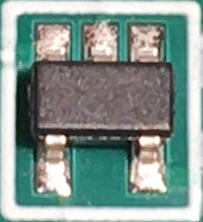|
Command-loss Timer
In spacecraft, a Command-Loss Timer (CLT) is a software timer within the command and data system (CDS) which is restarted every time the spacecraft receives a command from Earth. If the CLT times out, it is assumed that the spacecraft's receiver has failed to reliably receive messages and, in response, the CDS will attempt to restore communication or perform safing procedures, or both. A Command Loss Timer is effectively a software watchdog timer which, upon timeout, initiates corrective actions that will in some cases swap to redundant communication hardware. Robotic spacecraft are accessible to human operators only by command telemetry. Consequently, a spacecraft need to be self-reliant, because its embedded systems cannot be physically accessed if a communication fault occurs. Without a CLT, such faults would result in the spacecraft becoming permanently disabled. Other uses Command Loss Timers are not limited to spacecraft, as any scientific instrument that is in a situation wh ... [...More Info...] [...Related Items...] OR: [Wikipedia] [Google] [Baidu] |
Timeout (computing)
In telecommunications and related engineering (including computer networking and programming), the term timeout or time-out has several meanings, including: * A network parameter related to an enforced event designed to occur at the conclusion of a predetermined elapsed time. * A specified period of time that will be allowed to elapse in a system before a specified event is to take place, unless another specified event occurs first; in either case, the period is terminated when either event takes place. Note: A timeout condition can be canceled by the receipt of an appropriate time-out cancellation signal. * An event that occurs at the end of a predetermined period of time that began at the occurrence of another specified event. The timeout can be prevented by an appropriate signal. Timeouts allow for more efficient usage of limited resources without requiring additional interaction from the agent interested in the goods that cause the consumption of these resources. T ... [...More Info...] [...Related Items...] OR: [Wikipedia] [Google] [Baidu] |
Watchdog Timer
A watchdog timer (WDT, or simply a ''watchdog''), sometimes called a ''computer operating properly timer'' (''COP timer''), is an electronic or software timer that is used to detect and recover from computer malfunctions. Watchdog timers are widely used in computers to facilitate automatic correction of temporary hardware faults, and to prevent errant or malevolent software from disrupting system operation. During normal operation, the computer regularly restarts the watchdog timer to prevent it from elapsing, or ''timeout (computing), timing out''. If, due to a hardware fault or program error, the computer fails to restart the watchdog, the timer will elapse and generate a timeout signal. The timeout signal is used to initiate corrective actions. The corrective actions typically include placing the computer and associated hardware in a safe state and invoking a computer reboot. Microcontrollers often include an integrated, on-chip watchdog. In other computers the watchdog may re ... [...More Info...] [...Related Items...] OR: [Wikipedia] [Google] [Baidu] |
Safe Mode (spacecraft)
Safe mode is an operating mode of a modern uncrewed spacecraft during which all non-essential systems are shut down and only essential functions such as thermal management, radio reception and attitude control are active. Safe mode is entered automatically upon the detection of a predefined operating condition or event that may indicate loss of control or damage to the spacecraft. Usually the trigger event is a system failure or detection of operating conditions considered dangerously out of the normal range. Cosmic rays penetrating spacecraft electrical systems can create false signals or commands and thus cause a trigger event. The central processor electronics are especially prone to such events. Another trigger is the lack of a received command within a given time window. Lack of received commands can be caused by hardware failures or mis-programming of the spacecraft, as in the case of the Viking 1 lander. The process of entering safe mode, sometimes referred to as ''safing' ... [...More Info...] [...Related Items...] OR: [Wikipedia] [Google] [Baidu] |

